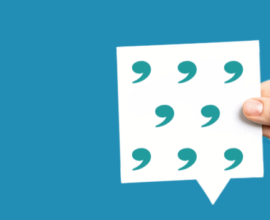A Beginner’s Guide to Publishing Terms
Certain publishing terms can be confusing when encountered for the first time. Here is a guide for you to understand what they mean.
With the advent of the internet, people began consuming content in unbelievable proportions. The more information they consumed, the more they shared. Millions of people found multiple platforms to showcase their writings, musings and experiences – this was shared and read by others.For the longest time, book publishing was a language spoken only by academicians and writers of literature. The internet did not spare this industry either, though. Cut to the year 2010 when the first leaves of the now big tree known as ‘Self- Publishing’ started to sprout. First-time writers and lesser- known authors started embracing this egalitarian idea. With self-publishing, authors did not have to send their manuscripts to publishing houses and await a response. The power to publish was in their hands. Today there are hundreds of self-publishing houses serving as platforms for millions of authors, helping them bring out industry quality books. Thousands of new books are being added to Amazon as this article is being written.
Books are not just for leisure and knowledge transfer anymore. Now, a book is like a business card for individuals; it is a tool for professionals to advance in their careers; brands use books as sales collaterals.
We are hearing a lot of people say “I have an idea and I’m going to write a book about it.” A 2011 survey indicates that more than 81 per cent of the world’s citizens think that they have a book in them and they should publish it. Technically you are more likely to publish a book than Kim Jong launching a nuke. As writers who are willing to take the self-publishing route, it is very important for you to familiarize yourself with some of the common terminologies used in the publishing industry. To begin with, we thought we’d introduce you to a handful of commonly used publishing terms.
ISBN
ISBN stands for International Standard Book Number. It is a 13 digit number with which a book is identified. You will find this number on the book’s back cover. An ISBN is basically a product identifier used by publishers, libraries and retailers for listing and inventory management. The first 3 digits in an ISBN is known as the prefix element, the next 2 digits indicate the country or geographical region registered in the ISBN system, the next 5 digits helps identify the publisher of the book and the subsequent 2 digits give information on the edition and the book’s format, and the last digit is known as a check digit which validates the ISBN. Most countries mandate the use of ISBN to identify publications. If you are planning on getting your work published, the ISBN is an indispensible element – your book cannot be placed in the public domain.
Book Trim Sizes
Books come in different sizes and the size of a book primarily depends on the genre. A book’s size plays a crucial role in its pricing. If you are writing a murder mystery, a suspense thriller or a breezy college love story, the ideal sizes for your book are 5*8 inches and 5.5*8.5 inches. These are universally accepted sizes for a fiction book. Books that come in these sizes are easy to hold and carry around because they are basically light reads.
If you want to publish nonfiction content, say a travelogue or a product manual or a memoir, the size 6*9 inches will fit the bill. These books are slightly bigger than fiction novels so that they highlight the content inside.
If you are a subject matter expert with the intention to publish a book based on your research or a photographer who wants to make a coffee table book with the best of your clicks or a teacher who needs to create an activity book for school children, the perfect size for your work is 8.5 *11 inches.
Book Formats
A book’s format decides how the book will be bound. The two most widely used formats are paperback and hardcover. A paperback comes with a thick paperboard cover and is often used for fiction novels, making them light to carry around. A hardcover book will have a heavy paperboard or cardboard cover with a spine that is sewn together. Hardcovers may also have an extra layer of cloth or leather. These covers add to the lifespan of a book by protecting it from folding corners and other damages.
Online Distribution
Bookstores worldwide are disappearing so fast that Usain Bolt has started feeling insecure about his feats and is reconsidering his retirement. If you are thinking about displaying your newly published book in a few local bookstores and feel proud about it, well, think again. 82% of book sales that happened in 2013 were online and out of all the products that were bought online, books constituted 13%. Clearly, almost the entire book market has moved online. Like we mentioned earlier, thousands of the books are being added to the amazon catalogue every day. Now, people buy, review, discuss and promote books online. Listing your book online takes it across the globe, helps you reach more people and gives your book more visibility. It is also convenient for people to make a purchase and have the book delivered to their doorstep.
Ingram Distribution
Ingram is the largest book distributor in the world and it makes books available across 30,000 stores and libraries in more than 150 countries. When readers walk into a bookstore tied up with Ingram, they get access to the largest catalogue of books in both print and digital formats. All they have to do is select a book of their choice and have it delivered to their homes. To have your book published with Ingram means that your work sits next to some of the best works by leading authors from around the world.
Print On Demand
Books of acclaimed authors sell in thousands. Therefore, publishers are willing to invest huge amounts of money in printing large quantities of their books. But this wouldn’t be the case for a first time author without any ‘literary credibility’. No publisher would want to burn their fingers by printing thousands of copies of a first time author’s work even if they are absolutely convinced that the manuscript would fetch them a Man Booker. Printing in small quantities is a very expensive affair for a traditional printing setup and not a feasible option. Now it may seem like there’s no option left.
Say hello to your saviour – ‘Digital Printing’. On Demand Digital Printing makes it possible to print even a single copy at a less cost. With this technology, books are printed only after the customer makes the order. Printing on Demand (PoD) eliminates problems of excess printing and warehousing. PoD is your safest bet.
These are some basic terms thrown around during the publishing process. So the next time you talk to your editor or consultant, you’ll begin to sound like a total pro. Watch this space for more terms and information on publishing.





